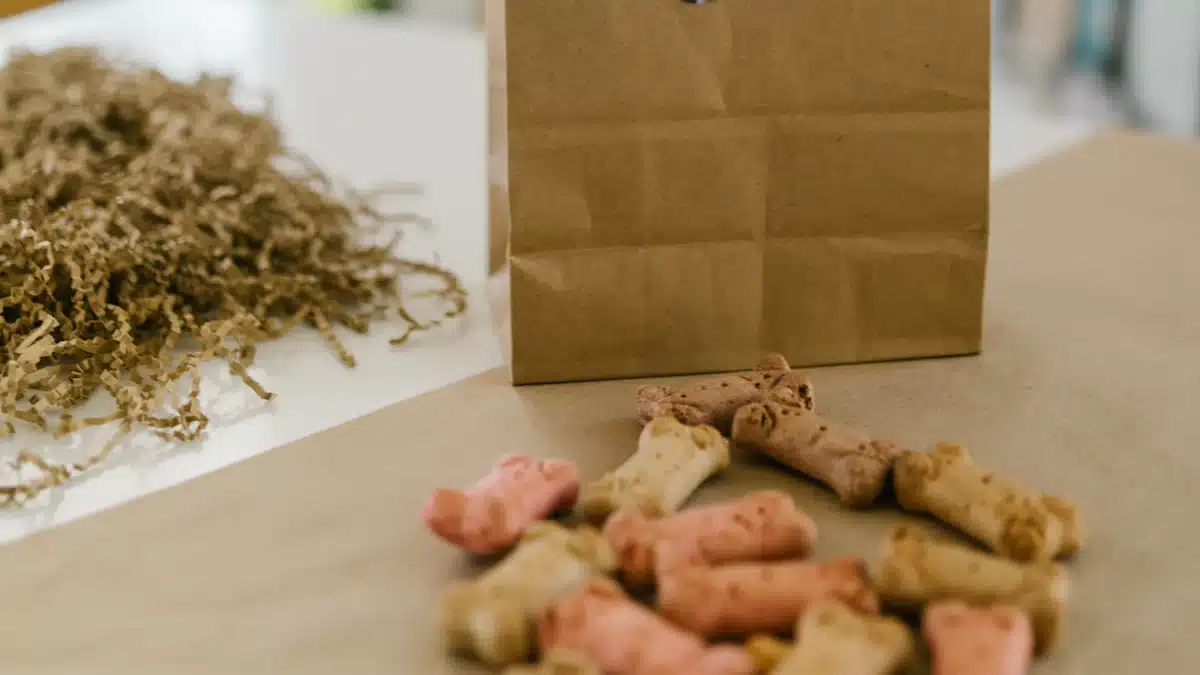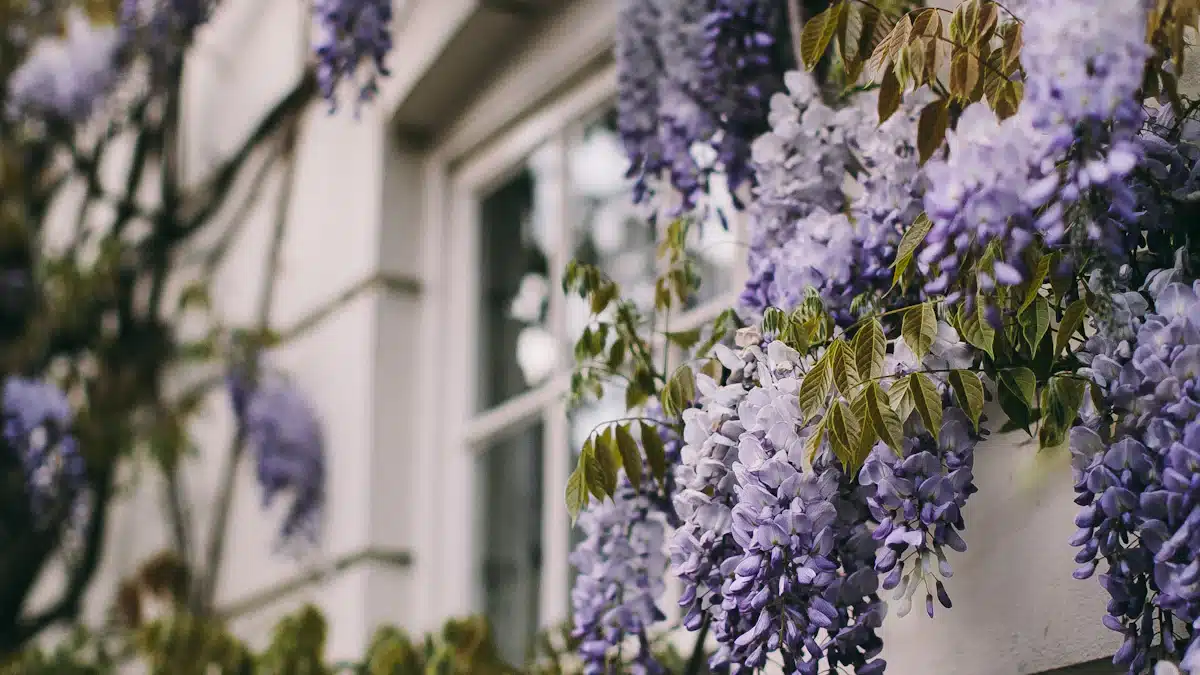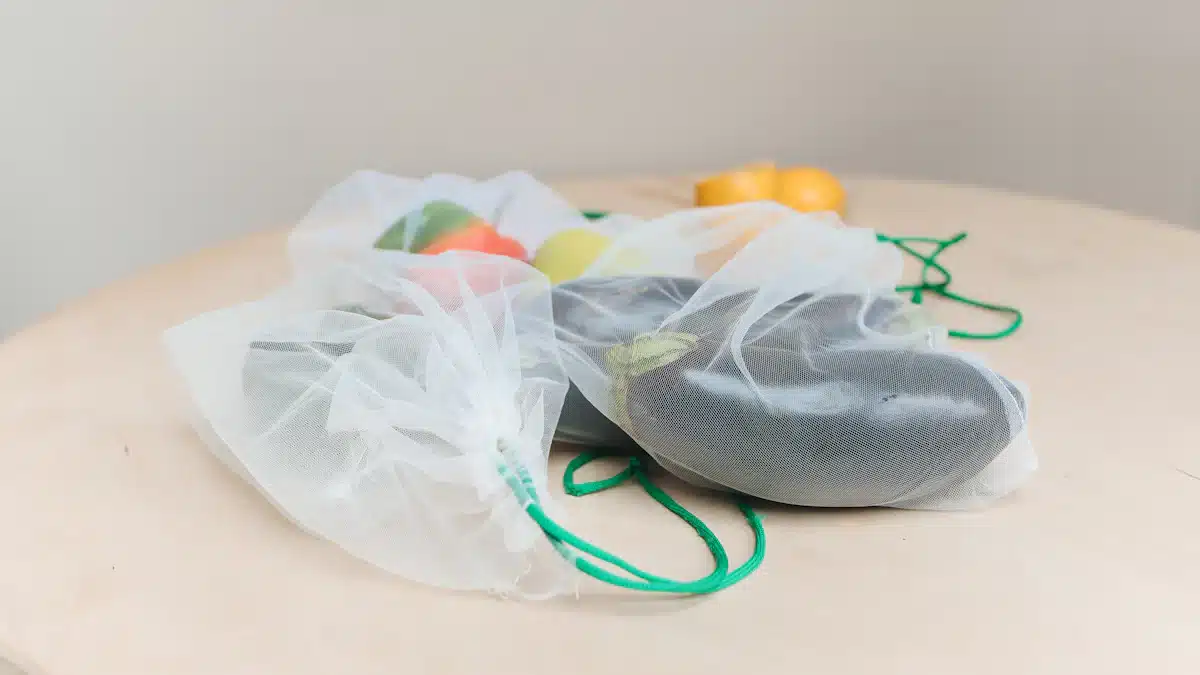
When you choose biodegradable balloons, you opt for an eco-friendly choice that aligns with sustainable values. These balloons, crafted from natural latex, decompose much faster than traditional ones. Unlike synthetic balloons that can persist for centuries, biodegradable options break down naturally, reducing their environmental footprint. However, they can still pose risks to wildlife during the decomposition process. Traditional balloons often litter natural areas, where animals may mistake them for food or become entangled. By selecting eco-friendly balloons, you contribute to a green celebration while minimising harm to the planet.
Key Takeaways
Biodegradable balloons are made from natural latex. They break down faster than plastic balloons, which helps the environment.
Using biodegradable balloons cuts down on plastic waste. It also keeps animals safe from balloon pieces.
Always pop biodegradable balloons and throw them in a bin. This stops littering and protects animals from harm.
Try reusable decorations or compostable items to reduce waste. These are better for eco-friendly celebrations.
Check for certifications to ensure balloons are truly eco-friendly. This helps avoid being tricked by false green claims.
What Are Biodegradable Balloons?
Definition and Features
Biodegradable balloons are an eco-friendly alternative to traditional balloons. These balloons are primarily made from biodegradable latex rubber, which comes from the sap of the Hevea brasiliensis tree. This natural material is renewable and free from harmful chemicals or petroleum-based components. Unlike synthetic balloons, biodegradable latex balloons are designed to break down naturally over time. When exposed to sunlight, oxygen, and moisture, they decompose much faster, making them safer for the environment.
Biodegradable balloons are designed to naturally break down over time, reducing their environmental impact compared to traditional balloons.
Key features of biodegradable balloons include:
They are made from natural latex, which decomposes faster than synthetic materials.
They help reduce plastic waste and minimise harm to wildlife.
They decompose naturally under ideal conditions, such as exposure to sunlight and moisture.
Although these balloons decompose faster, the process can still take months in ideal conditions or up to 15 years in natural environments. In contrast, traditional balloons can persist for hundreds of years, making biodegradable options a more sustainable choice.
Differences from Traditional Balloons
Biodegradable balloons differ significantly from traditional balloons in both material and environmental impact. Traditional balloons are often made from synthetic materials like Mylar or plastic, which can take centuries to decompose. These materials contribute to long-term plastic pollution and pose severe risks to wildlife. Animals may ingest balloon fragments or become entangled, leading to injuries or death.
In contrast, biodegradable latex balloons decompose much faster and are less harmful to the planet. They do not contain petroleum-based components, making them a safer option for eco-conscious celebrations. Additionally, biodegradable balloons are often made from renewable materials like latex, paper, or organic cotton, further reducing their environmental footprint.
How Are Biodegradable Balloons Made?
Natural Latex and Its Properties
You might wonder what biodegradable balloons are made of and why they are considered eco-friendly. The answer lies in natural latex, a renewable material derived from the sap of the Hevea brasiliensis tree. This sap is harvested sustainably, making it an excellent alternative to synthetic materials. Natural latex possesses unique properties that make it ideal for creating biodegradable balloons.
Property | Description |
|---|---|
Renewable | Derived from the sap of the Hevea brasiliensis tree, can be harvested sustainably. |
Elasticity | Highly elastic and resilient, suitable for various applications. |
Durability | Durable material, ensuring longevity in use. |
Biodegradability | Breaks down naturally, making it an eco-friendly alternative to synthetic materials. |
These properties ensure that biodegradable balloons are not only functional but also environmentally responsible. Unlike traditional balloons, which rely on petroleum-based components, natural latex decomposes naturally, reducing its impact on the planet.
The Manufacturing Process
The process of making biodegradable balloons begins with harvesting natural latex. Workers tap the Hevea brasiliensis tree by scoring its bark, allowing the sap to flow out. Small cups collect the latex, which is then processed to remove impurities. This raw material is the foundation of biodegradable balloons.
Here’s how the balloons are made:
A metal mould is dipped into a liquid latex solution.
The mould is slowly pulled out, allowing a thin layer of latex to adhere to its surface.
This dipping process is repeated until the desired thickness is achieved.
The latex-coated mould is placed in hot water to solidify the latex.
Once the latex sets, the balloon is removed from the mould, washed, and dried.
Finally, the balloon is decorated or shaped as needed.
This process ensures that biodegradable balloons maintain their elasticity and durability while remaining eco-friendly. By using natural latex, manufacturers create a product that decomposes naturally, unlike traditional balloons made from synthetic materials.
Environmental Benefits of Biodegradable Balloons

Reducing Plastic Waste
Biodegradable balloons offer a practical way to reduce plastic waste in the environment. Unlike traditional balloons made from synthetic materials, these balloons decompose quickly and harmlessly. When you choose biodegradable options, you help minimise the long-term pollution caused by plastic debris. Traditional balloons can persist in ecosystems for years, contributing to the growing problem of plastic waste. In contrast, biodegradable balloons break down into organic matter, leaving no harmful residues behind.
Biodegradable balloons are crafted from natural materials that decompose quickly.
They serve as an environmentally friendly alternative to traditional balloons.
By opting for these balloons, you actively reduce plastic waste and protect wildlife.
Switching to biodegradable balloons allows you to celebrate responsibly while supporting a cleaner planet. This small change can make a significant difference in reducing the environmental footprint of your events.
Lowering Risks to Wildlife
Traditional balloons pose severe risks to wildlife. Animals often mistake balloon fragments for food or become entangled in strings, leading to injuries or death. For example, sea turtles confuse deflated balloons with jellyfish, which can cause fatal digestive blockages. Birds and marine life also face similar dangers when they ingest balloon debris.
Biodegradable balloons mitigate these risks by decomposing more quickly. Made from natural latex, they break down into organic matter, reducing the chances of animals ingesting harmful materials. By choosing biodegradable options, you help minimise the harm caused to ecosystems and wildlife.
Traditional balloons litter natural areas and threaten wildlife.
Animals may ingest balloons or become entangled in strings.
Biodegradable balloons decompose faster, lowering these risks.
Your choice of biodegradable balloons can protect wildlife and preserve natural habitats, making celebrations more environmentally friendly.
Supporting Sustainable Practices
Biodegradable balloons support sustainable practices by using renewable materials and reducing pollution. These balloons are made from natural latex, which decomposes when exposed to sunlight, oxygen, and moisture. Unlike traditional balloons, which can remain in ecosystems for years, biodegradable options break down quickly, leaving a smaller ecological footprint.
By choosing biodegradable balloons, you promote sustainability in the balloon industry. This decision encourages manufacturers to adopt environmentally friendly practices and reduce reliance on synthetic materials. Celebrating with biodegradable balloons allows you to enjoy your events while actively contributing to a more sustainable future.
Biodegradable balloons combine functionality with eco-consciousness, making them a responsible choice for celebrations.
When you opt for these balloons, you align your celebrations with sustainable values, helping to protect the planet for future generations.
Limitations of Biodegradable Balloons
Decomposition Challenges
Biodegradable balloons, while eco-friendly in theory, face significant decomposition challenges. You might assume these balloons break down quickly, but that is not always the case. For effective decomposition, specific environmental conditions such as high humidity, warm temperatures, and direct sunlight are essential. Without these, balloons can persist in the environment for years, contributing to pollution. For instance, studies have shown that even in industrial compost heaps, biodegradable balloons can remain intact for over 16 weeks.
Improper disposal further complicates the issue. Many people release balloons into the air or discard them in regular bins, where they end up in landfills or natural habitats. In these settings, the lack of ideal conditions slows decomposition, increasing the environmental risks of biodegradable balloons. Additionally, chemical additives used during manufacturing can leave harmful residues, disrupting soil and water quality. These challenges highlight the importance of responsible disposal to minimise their environmental impact.
Risks of Greenwashing
Greenwashing is a growing concern in the biodegradable balloon industry. Companies often market these balloons as fully eco-friendly without providing evidence to support their claims. This creates the illusion of environmental responsibility, misleading you into believing the product is more sustainable than it actually is. For example, some manufacturers have faced accusations of exaggerating biodegradability claims, leading to consumer confusion.
When you purchase biodegradable balloons, it is crucial to verify the authenticity of their eco-friendly claims. Look for certifications or independent testing results to ensure the product aligns with your environmental values. By staying informed, you can avoid falling victim to greenwashing and make more sustainable choices.
Single-Use Nature
Despite their eco-friendly design, biodegradable balloons remain a single-use product. Once used, they contribute to waste, even if they decompose over time. Their single-use nature limits their overall sustainability, especially when compared to reusable or alternative decorations. For example, balloons can disrupt soil composition as they break down, and their prolonged presence in certain environments can still pose risks to wildlife.
To reduce waste, consider alternatives like fabric bunting, paper lanterns, or natural decorations such as flowers and potted plants. These options not only minimise environmental impact but also add a unique touch to your celebrations. By exploring reusable or compostable decorations, you can celebrate responsibly while reducing reliance on single-use items.
Responsible Use and Disposal of Eco-Friendly Balloons

Proper Disposal Methods
Disposing of biodegradable balloons responsibly is essential to minimise their environmental impact. While these balloons are designed to break down naturally, improper disposal can still harm wildlife and ecosystems. You should always pop used balloons and place them in a garbage bag to prevent littering. Composting them is another option, as natural latex can decompose under the right conditions. If composting is not feasible, dispose of them in a bin designated for biodegradable waste.
Avoid releasing balloons into the air. Even biodegradable options can take years to degrade in natural environments, posing risks to animals that may ingest them. Wildlife, such as birds and marine creatures, often mistake balloon fragments for food, leading to injuries or fatalities. By ensuring proper disposal, you help protect these vulnerable species and reduce litter.
Several organisations promote responsible balloon use. For example, The Balloon Council educates consumers on smart balloon practices, while the Pro Environment Balloon Alliance (PEBA) works to eliminate balloon releases. These initiatives encourage you to handle balloons responsibly and dispose of them in ways that align with environmental values.
Initiative | Description |
|---|---|
The Balloon Council | Educates consumers on proper balloon handling and disposal. |
Responsible Balloon Retailer | Certifies retailers promoting responsible balloon use and disposal. |
Pro Environment Balloon Alliance | Collaborates with environmental groups to prevent balloon releases. |
Alternatives to Balloons
If you want to reduce waste further, consider using environmentally friendly alternatives for your celebrations. Colourful paper chains and handmade paper flowers can replace traditional balloon decorations. These options are reusable and add a unique touch to your events. Pinwheels made from paper and wooden sticks work well for outdoor settings, while sustainable garlands crafted from recycled fabrics or raffia offer a creative and eco-friendly alternative.
Biodegradable water balloons made from natural rubber latex provide a fun option for outdoor activities. Unlike traditional balloons, these break down naturally, making them a safer choice for the environment. Reusable decorations, such as bunting and banners, also serve as a sustainable alternative to single-use balloons. These options not only reduce waste but also align with your commitment to eco-conscious celebrations.
Switching to biodegradable balloon alternatives helps you minimise your environmental footprint. While biodegradable balloons are safe and decompose faster than traditional ones, they still take time to break down. For example, studies show that even under composting conditions, these balloons can remain intact for weeks. By choosing reusable or compostable decorations, you can celebrate responsibly and protect the planet.
Biodegradable balloons offer a greener way to celebrate by reducing plastic waste and lowering risks to wildlife. They decompose faster than traditional balloons, cutting down on long-term pollution. However, they are not without flaws. These balloons can take years to fully degrade, and manufacturing additives may leave harmful residues. To minimise environmental impact, you should use them responsibly and dispose of them properly.
Consider exploring alternatives like reusable decorations or eco-friendly confetti. These options provide sustainable solutions that align with your commitment to protecting the planet while celebrating responsibly. 🌍
FAQ
What are compostable balloons, and how do they differ from biodegradable ones?
Compostable balloons break down into non-toxic, organic matter that enriches the soil when composted. Biodegradable balloons also decompose but may leave residues or take longer. Compostable balloons offer a more eco-friendly option for celebrations, especially when disposed of in composting facilities.
Can you compost compostable balloons at home?
Yes, you can compost compostable balloons at home if you have a composting setup. Ensure the balloons are made from natural materials like latex. Cut them into smaller pieces to speed up decomposition. However, industrial composting facilities provide optimal conditions for faster breakdown.
How long do compostable balloons take to decompose?
Compostable balloons decompose within a few months under ideal composting conditions. Factors like temperature, moisture, and oxygen levels affect the process. In home composting setups, decomposition may take longer compared to industrial facilities.
Are compostable balloons safe for wildlife?
Yes, compostable balloons are safer for wildlife than traditional balloons. They break down into organic matter, reducing the risk of ingestion or entanglement. However, proper disposal is crucial to prevent harm during the decomposition process.
What are the best alternatives to compostable balloons?
Consider reusable decorations like fabric bunting, paper lanterns, or potted plants. These options reduce waste and align with eco-friendly values. Compostable balloons are a great choice, but exploring alternatives can further minimise your environmental impact.






5 thoughts on “What Makes Biodegradable Balloons Eco-Friendly”
Pingback: Pump for Balloons: Electric or Manual? – Chaoee
Pingback: How to Choose Personalized Helium Balloons That Match Your Theme – Chaoee
Pingback: The Most Popular Promposal Balloons of 2025 – Chaoee
Pingback: Sempertex Balloons Explained What Makes Them Special – Chaoee
Pingback: Top 10 Balloon Decoration Ideas for a Magical Birthday Experience – Chaoee